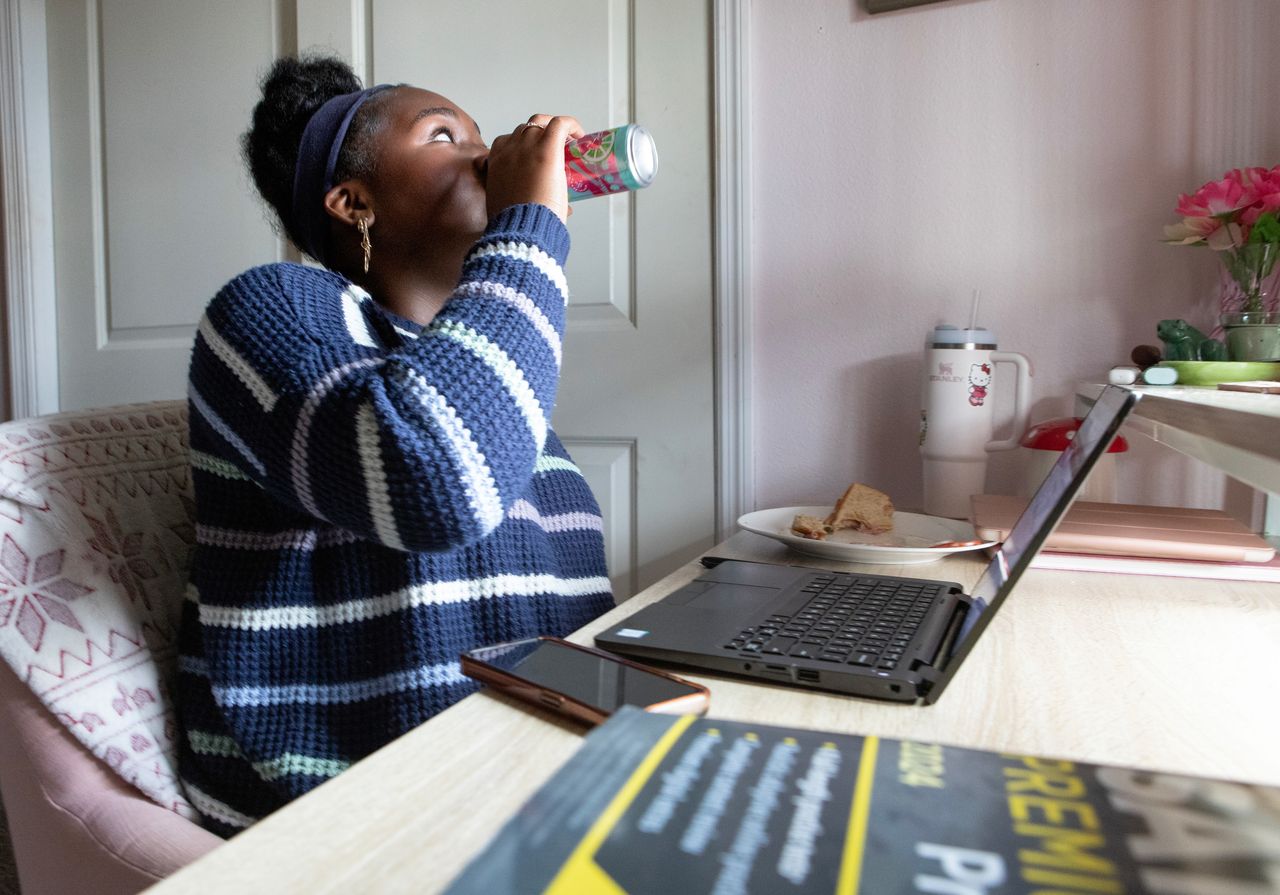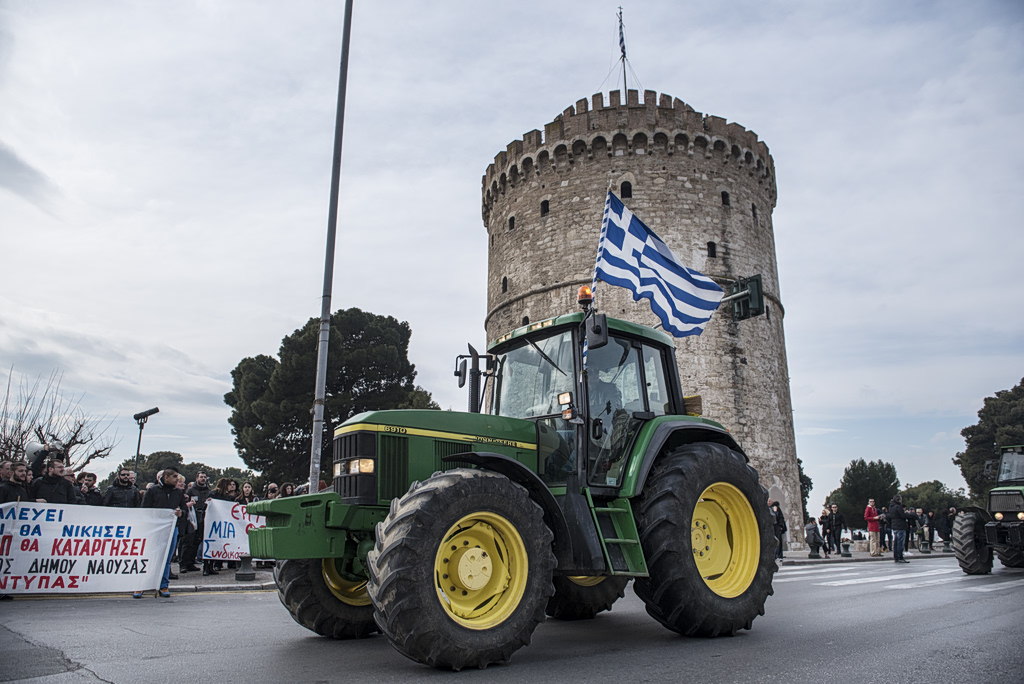Middle- and high-school students across the country are chugging energy drinks like water.
Teens often begin the day with a can after staying up late studying, gaming or texting, teachers and principals say. They drink more throughout the day to stay alert in class, and still more in the evening to grind through homework. When schools ban the drinks, students often pound them before class or hide them in other containers.
It can hinder learning, disrupt class and, in some cases, cause seizures. Students regularly visit the school nurse’s office, complaining of rapid heart rates and anxiety attacks after consuming several energy drinks, administrators say. Caffeine consumption is linked to heightened feelings of anxiety and depression, which are on the rise among adolescents.
“I think every single kid is drinking some form of energy drink at my school,” says Jefferson City, Mo., 17-year-old Jacqueline Rogers. Herself included. “We use caffeine because we overwork ourselves with activities and classes.”
The American Academy of Pediatrics recommends teens consume no more than 100 mg of caffeine daily—about what’s in an 8-ounce cup of coffee. Many students are drinking several times that amount. One 12-ounce can of Alani Nu, a brand popular with young people , contains 200 mg of caffeine. Other ingredients in energy drinks, such as ginseng, guarana and Ginkgo biloba, have stimulating effects, doctors say.
“Kids already have problems focusing, with all the distractions from phones and Chromebooks. Now these teens are constantly sipping energy drinks,” says Randy Freiman, a science teacher at Massena High School in Massena, N.Y. “Their hearts are racing, and they can’t sit still.”
Over the past few years, several students have had seizures at his school. They all share one connection, Freiman says: They consumed multiple energy drinks the day of their seizure.
Seizure starters
At Elkhorn Valley View Middle School near Omaha, Neb., Principal Chad Soupir estimates 70% of the 700 students regularly consume energy drinks—and they aren’t even allowed.
Many students drink them outside in the morning and sneak them into their lockers. So many students come into the front office with rapid heart rates after consuming high levels of caffeine—about 14 in the past year—that administrators now keep water and snacks on hand to rehydrate students and fill their stomachs.
Two years ago, an eighth-grader came to the school’s year-end celebration amped up on energy drinks and started having spasms. He collapsed in the cafeteria. “I sat there and held him and he gritted his teeth and tried to relax his muscles but he couldn’t,” Soupir recalls.
An ambulance took the student to the hospital, where he was treated with intravenous fluids, Soupir says.
Teachers sometimes have to wake students who have fallen asleep after the caffeine has worn off. “You’d think we’d see some behavioral problems, but we don’t,” Soupir says. “We just see unengaged students. They’re lethargic and unmotivated.”
Terri Daniels, principal of Folsom Middle School in Folsom, Calif., says at least a quarter of her school’s 1,500 students regularly consume energy drinks. Two to three students in each of the last three years have had seizures at school. In most cases, the students mentioned having energy drinks earlier in the day.
“It’s a silent crisis,” she says.
A recipe for trouble
Energy drinks aren’t regulated by the Food and Drug Administration the way soda and other beverages are. A typical 12-ounce cola can have a maximum of 70 mg of caffeine. Energy drinks, considered dietary supplements, often contain more than twice that. And there’s no packaging requirement to tell kids and parents how much caffeine is in there—or in any other caffeinated beverages kids are drinking.
A study last year of adverse health events in teens who consumed energy drinks found a link to seizures.
Torree McGowan, an emergency doctor in rural Oregon and a spokesperson for the American College of Emergency Physicians, says caffeine can cause teens with no history of seizures to have one. And teens’ late-night, social-media-scrolling lifestyle can make them more susceptible, says McGowan.
“If I wanted to try to induce seizures in someone, I would sleep-deprive them, show them a bunch of flashing lights and give them a bunch of caffeine,” she says.
There are other serious health effects of caffeine overconsumption, including high blood pressure and even fatal heart attacks .
‘I wish I could say I’d stop’
Jacqueline, the Missouri teen, started drinking energy drinks two years ago, then added caffeine pills when her course load got more rigorous. Last year, she had five AP classes, was involved with the student council and had either tennis practice or figure skating after school. She often stayed up until 3 a.m. to get her homework done, rising again at 7:30 a.m.
She would drink an Alani Nu in the morning, have another in the afternoon and then take two caffeine pills at night so she could complete her homework. When she had a big test or project, she’d have four drinks, plus the pills, pushing her total daily caffeine intake to more than 1,000 mg.
“I’d go to the bathroom every 10 minutes, my head was pounding and my body felt weird,” she says. “I felt like my heart was racing.”
Her father, James Rogers, says he didn’t know the extent of her caffeine habit. Alani Nu didn’t comment.
She cut back over the summer, down to a couple of cans a week. She says she won’t go back to the pills but worries about what will happen when school pressures mount again this fall.
“I wish I could say I’d stop drinking energy drinks completely,” Jacqueline says, “but if I’m being honest, I think I might go back to two to four drinks per day.”



